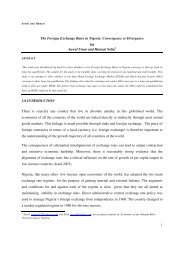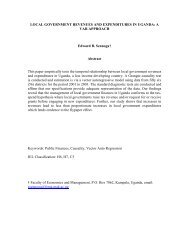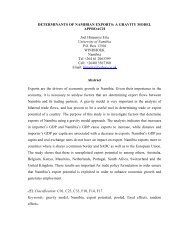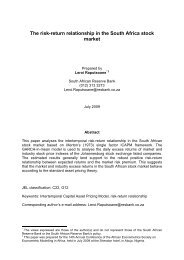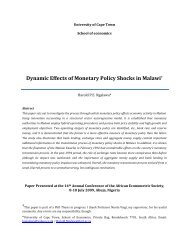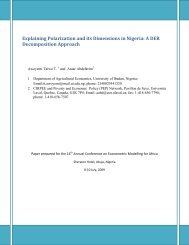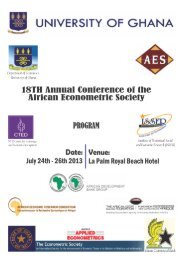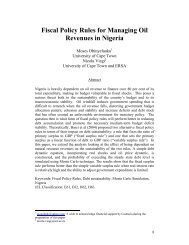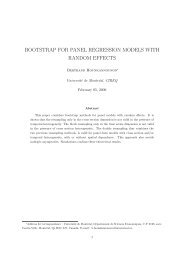An augmented capital asset pricing model
An augmented capital asset pricing model
An augmented capital asset pricing model
You also want an ePaper? Increase the reach of your titles
YUMPU automatically turns print PDFs into web optimized ePapers that Google loves.
4.2 Illiquidity Factors<br />
Figure 1 shows the cross sectional market aggregate average illiquidity factors. Again, caution is<br />
necessary in interpreting these data as market-wide indicators of liquidity because of the sample bias<br />
that results from the simple equally weighted average of individual stocks illiquidity. However, they<br />
do highlight the variance in the liquidity profiles of the markets and reflect the differences in<br />
institutional, regulatory and macroeconomic environments in this group of emerging markets. The<br />
Amihud liquidity measures used have been multiplied by 1 million in order to facilitate comparison.<br />
Figure 1<br />
All markets are characterised by very large spikes in the data. A small period of illiquidity for<br />
South Africa around the beginning of 2000 reflects the general downturn in developed country<br />
financial markets that led fund managers to transfer holdings out of emerging markets to less risky<br />
investment. This followed the 1997 Asian currency crisis, the 1998 Russian debt crisis, and the<br />
2000/2001 depreciation of the Rand. Quite different factors influenced the markets in Egypt and<br />
Morocco. It would appear that the effects of substantial market reform are in both markets’ illiquidity<br />
profiles. Following the establishment of electronic trading, the central securities depository, and more<br />
effective regulation during the late 1990s and early 2000s the effect appears to be negative, given the<br />
substantial increase in aggregate market illiquidity for Morocco. Egypt follows a slightly different<br />
profile and while levels of aggregate illiquidity are comparable to those of Morocco, illiquidity<br />
decreases after 2005. The markets of London and Kenya are markedly different from all the others.<br />
Illiquidity for London differs from other countries in the sample in the order of 100. Kenya is at the<br />
other end of the illiquidity spectrum, with levels that are both high and variable. Interestingly Kenya<br />
is further split into its component markets: the overall market, the main and AIMS. It can be seen that<br />
the overall and AIMS markets have relatively stable profiles with only a gradual increase in illiquidity<br />
from the late 1990s to 2003, which can be attributed to the general loss of value and stagnation of the<br />
stock exchange in Kenya during this period. However, due to the size and variety of companies in the<br />
main market compared to the AIMS the aggregate levels of illiquidity are both higher and more<br />
variable compared to the other two markets.<br />
4.3 Performance of Size-Illiquidity ranked portfolios in an overall market context<br />
Table 4 reports the results from the grouped pooled regression on all nine size-illiquidity sorted<br />
portfolios. As expected from the <strong>model</strong>, the Jensen alpha, α p , is not significantly different from zero in<br />
all cases with the exception of the large size, medium liquidity portfolio. This indicates that there is<br />
little segmentation between various portfolios representing size or liquidity characteristic of the overall<br />
market. The estimated coefficients on both the market excess return (β p ) and the illiquidity factor (H p )<br />
are large and significant in almost all cases. Those on the size factor-mimicking portfolio (S p ) are<br />
smaller in the majority of cases and are only significantly different from zero in the large or small size



